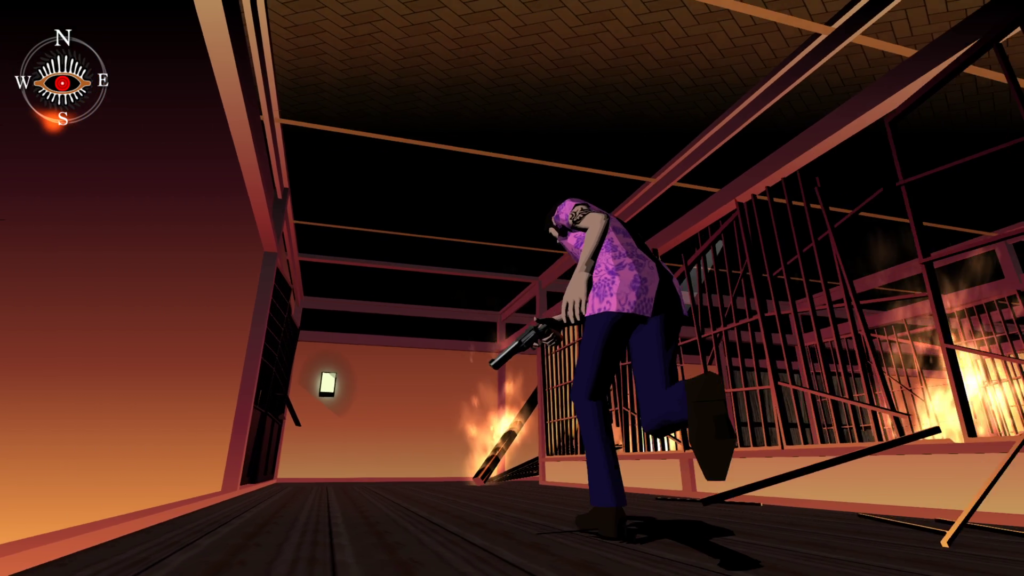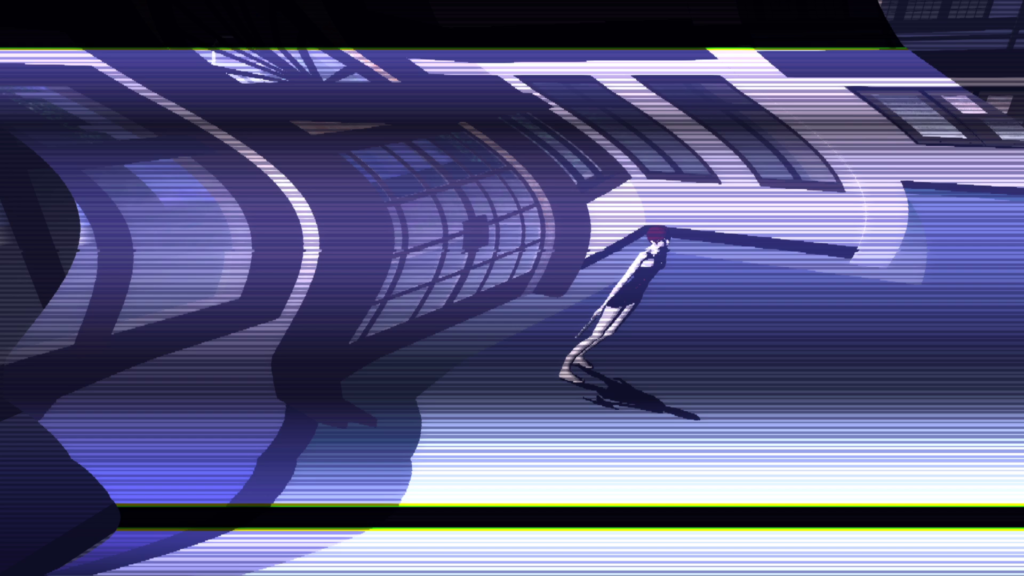Although this girl is only sixteen and his adopted daughter, her fetishized cosplay outfit complete with tropey panty shots, most notably when she dies, as well as Curtis’s pervasive violence toward women—using other underage orphans to pleasure himself, killing his “bitch” for fun, raping Pedro’s wife—leave no doubt that Curtis sexually abused her as well. (They also carry a degree of genre critique, though halfhearted given the portrayal of women in much of Grasshopper Manufacture’s output, including killer7).

Where Kamui pursues light and flees darkness in The Silver Case, Ayame Blackburn conceals herself in darkness and only becomes visible—and vulnerable to the player’s bullets—when she passes through bright light. Light is her weakness. Far from using her power in defiance or acknowledging a tragic past to keep moving forward into the light of possibility as Sakura does, Ayame in killer7 is worse off than even Format Kamui: a grizzly victim of a powerful old man and in turn a victimizer, always in darkness.
***

Now to consider Emir Parkreiner. For most of killer7, the focus character is a man called Garcian Smith who lives in a supernatural trailer in Seattle, Washington. He is a member of the titular Killer7 or Second Smith Syndicate, a group of dead assassins whom the quasi-divine Harman Smith, materialistic god of the “Western” world, has absorbed and returned to semi-life as his slaves using a power called the “Multifoliate Personae Phenomenon.” Like Format Kamui in his relationship to the FSO, the “robotified” Killer7 unquestioningly assassinate whomever the US government commands them to via their contact Christopher Mills.

Their lack of freedom is represented in the gameplay: the player can only navigate pre-defined invisible paths no matter what the environment. The opposite of how Kurumizawa defines reality by living unobserved, the Killer7 are defined by how they are observed, being locked into a certain persona when one of the many surveillance cameras sees them/him/her. The automatons are frequently watched and have no initiative, their very bodies now stolen, not their own but Harman’s.
